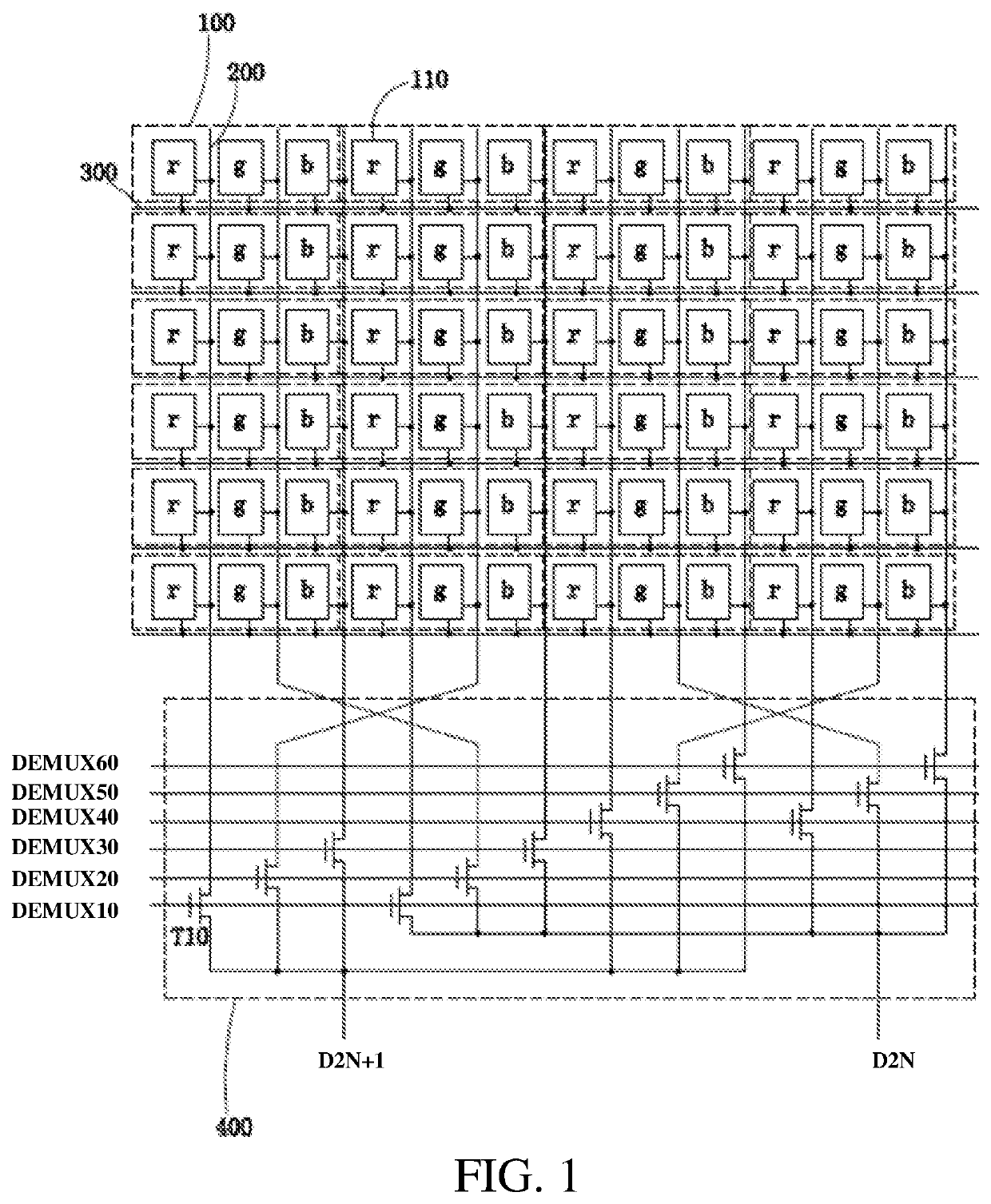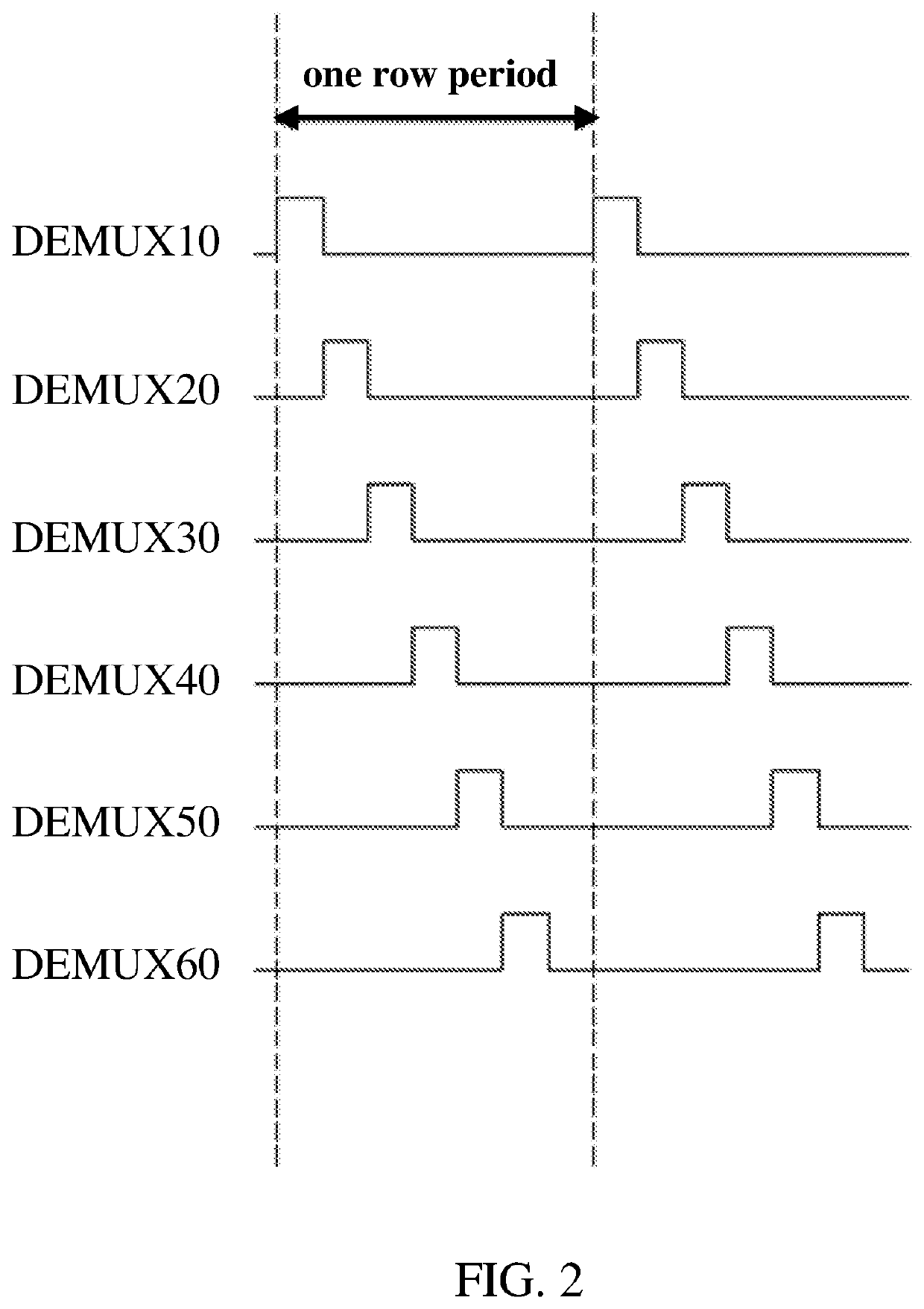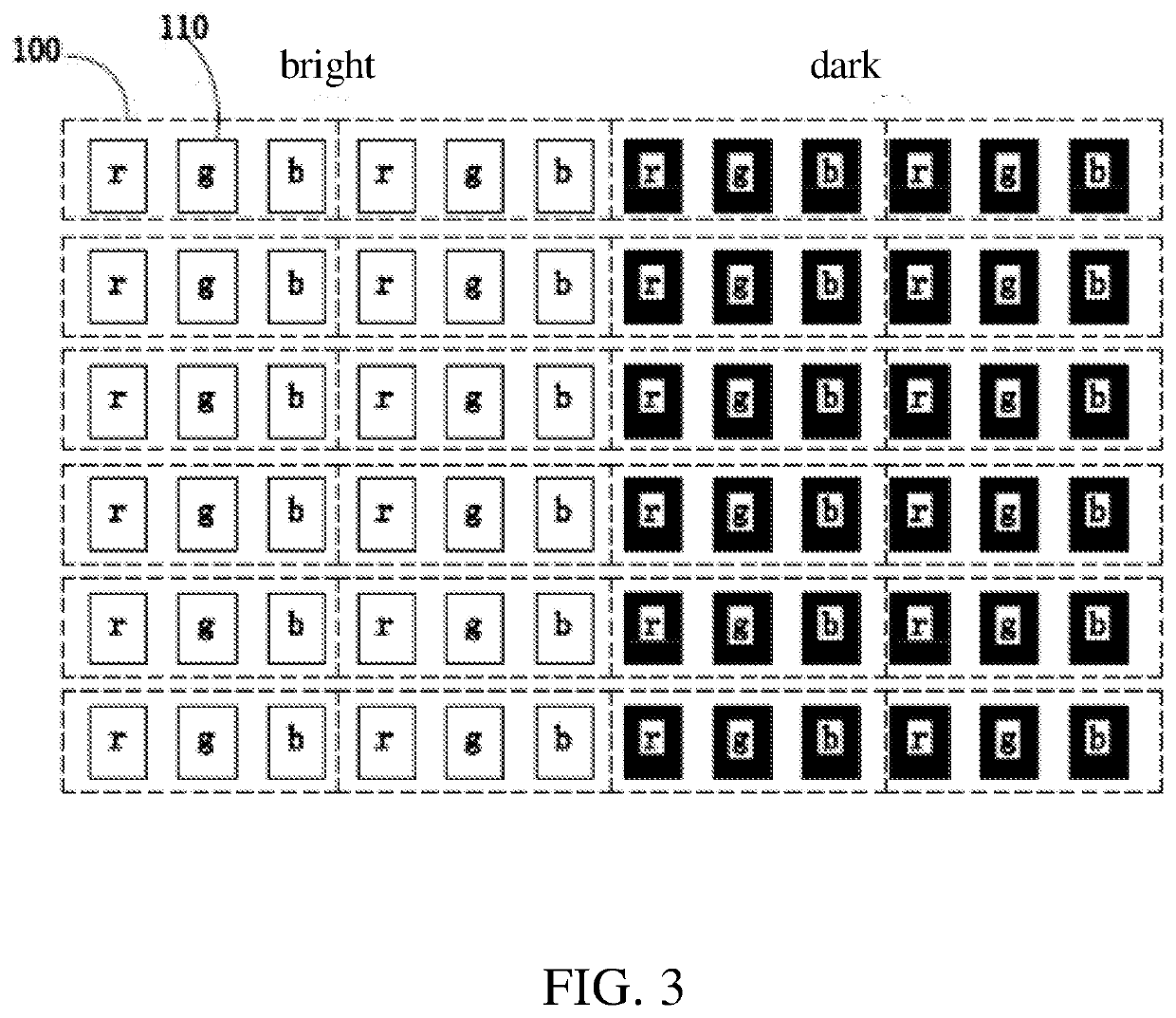Driving method for display panel
- Summary
- Abstract
- Description
- Claims
- Application Information
AI Technical Summary
Benefits of technology
Problems solved by technology
Method used
Image
Examples
first embodiment
[0056]Optionally, as illustrated in FIG. 6 and FIG. 7, in the present disclosure, the first sequence is: in the first image frame, during scanning each row of the subpixels, sequentially generating the high-level pulse according to a sequence of the first demultiplexing signal DEMUX1, the second demultiplexing signal DEMUX2, the third demultiplexing signal DEMUX3, the fourth demultiplexing signal DEMUX4, the fifth demultiplexing signal DEMUX5 and the sixth demultiplexing signal DEMUX6; the second sequence is: in the second image frame, during scanning each row of the subpixels, sequentially generating the high-level pulse according to a sequence of the sixth demultiplexing signal DEMUX6, the fifth demultiplexing signal DEMUX5, the fourth demultiplexing signal DEMUX4, the third demultiplexing signal DEMUX3, the second demultiplexing signal DEMUX2 and the first demultiplexing signal DEMUX1.
[0057]It should be noted, that in the first embodiment of the present disclosure, in the first i...
third embodiment
[0060]Optionally, as illustrated in FIG. 10 and FIG. 11, in the present disclosure, the first sequence is: in the first image frame, when scanning the 4i-3th row subpixels and the 4i-2th row subpixels, sequentially generating the high-level pulse according to a sequence of the first demultiplexing signal DEMUX1, the second demultiplexing signal DEMUX2, the third demultiplexing signal DEMUX3, the fourth demultiplexing signal DEMUX4, the fifth demultiplexing signal DEMUX5 and the sixth demultiplexing signal DEMUX6; during scanning the 4i-1th row subpixels and the 4ith row subpixels, sequentially generating the high-level pulse according to a sequence of the sixth demultiplexing signal DEMUX6, the fifth demultiplexing signal DEMUX5, the fourth demultiplexing signal DEMUX4, the third demultiplexing signal DEMUX3, the second demultiplexing signal DEMUX2 and the first demultiplexing signal DEMUX1.
[0061]The second sequence is: in the second image frame, during scanning the 4i-3th row subpi...
fourth embodiment
[0063]Optionally, as illustrated in FIG. 12 and FIG. 13, as illustrated in the present disclosure, the first sequence is: in the first image frame, during scanning each row of the subpixels, sequentially generating the high-level pulse according to a sequence of the first demultiplexing signal DEMUX1, the second demultiplexing signal DEMUX2, the third demultiplexing signal DEMUX3, the fourth demultiplexing signal DEMUX4, the fifth demultiplexing signal DEMUX5 and the sixth demultiplexing signal DEMUX6.
[0064]The second sequence is: in the second image frame, during scanning each row of the subpixels, sequentially generating the high-level pulse according to a sequence of the fourth demultiplexing signal DEMUX4, the fifth demultiplexing signal DEMUX5, the sixth demultiplexing signal DEMUX6, the first demultiplexing signal DEMUX1, the second demultiplexing signal DEMUX2 and the third demultiplexing signal DEMUX3.
[0065]It should be noted, that in the fourth embodiment, through adding th...
PUM
 Login to View More
Login to View More Abstract
Description
Claims
Application Information
 Login to View More
Login to View More - R&D
- Intellectual Property
- Life Sciences
- Materials
- Tech Scout
- Unparalleled Data Quality
- Higher Quality Content
- 60% Fewer Hallucinations
Browse by: Latest US Patents, China's latest patents, Technical Efficacy Thesaurus, Application Domain, Technology Topic, Popular Technical Reports.
© 2025 PatSnap. All rights reserved.Legal|Privacy policy|Modern Slavery Act Transparency Statement|Sitemap|About US| Contact US: help@patsnap.com



